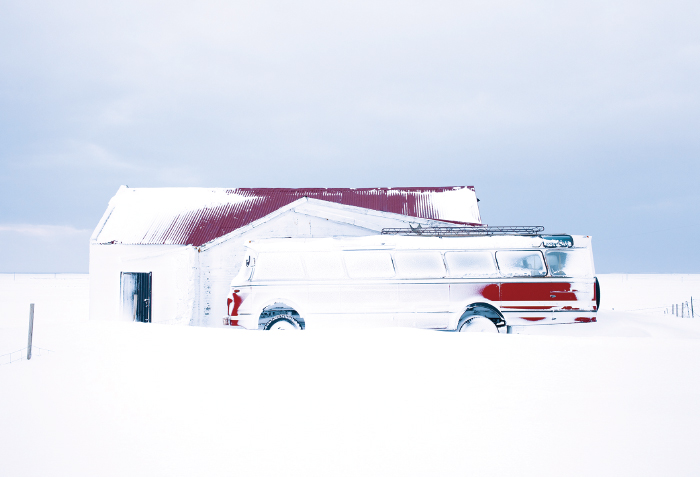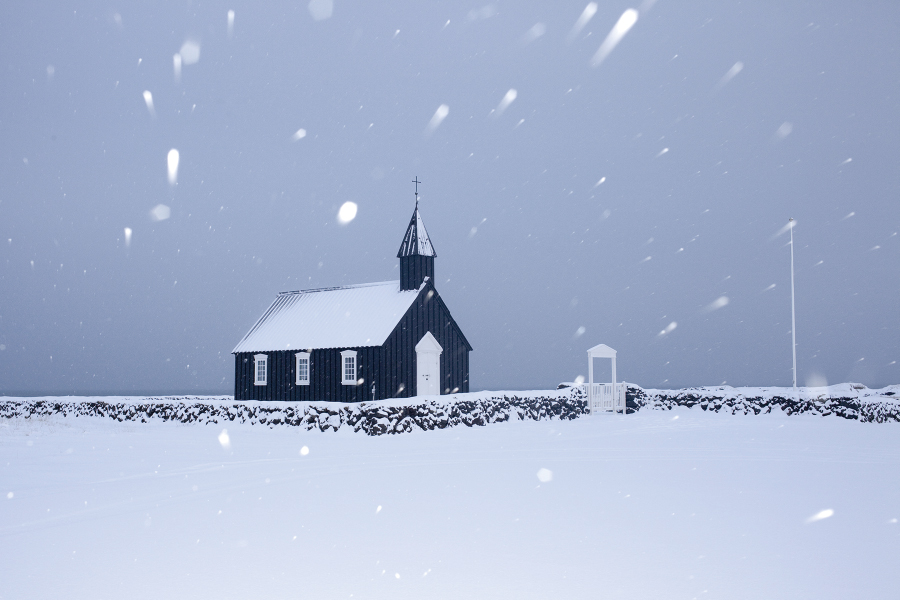Maroesjka Lavigne

Belgian Photographer Maroesjka Lavigne’s photographic process makes one take a closer look at the authentic colors of your own country, focusing on nature and desolate places of beauty.
Her experiences and travels form the basis of her visual images.
ベルギーの写真家マルシュカ・ラヴィンネの作品制作プロセスは、自然や荒れ果てた土地に焦点を当てることで、私たちそれぞれの国にふさわしい色を再発見させてくれます。
母国の小さな街で育った彼女の生い立ちや、多くの国を旅した経験が、作品のビジュアルイメージの基礎を形作っています。
INTERVIEW
– Can you tell me a brief history of how and where you’ve learned photography?
I started photography in high-school when I was about 14. I wanted to do something creative but wasn’t very sure what. It took me a while to get into photography. At first I only knew the classic
documentary photographers such as Robert Doisneau and Bresson. I looked up to those photographers but quickly realized this wasn’t my type of photography. In college I continued photography
and I got in contact with another type of photography. The kind where you tell a story with photography. Trying to describe a certain feeling.
– 写真を始めたきっかけや、どこで学んだのかなど、簡単な経歴を教えてください。
写真は14歳のとき高校で始めました。何かクリエイティブなことをしたいと思いながらも、何をしたら良いのかわからず、写真に興味を持つまでも時間が かかりました。写真を始めた頃はロバート・ドアーノやブレッソン
と言った著名なドキュメンタリーフォトグラファーのことしか知らず、彼らを師と仰いで いましたが、自分はドキュメンタリー写真にはむいていないことがすぐに分かりました。大学でも写真を続けているうちに、何か
特定の感情を表現する、 写真で物語を語るタイプの写真と出会いました。

– Do you have any favorite photographer or photographer who gave you an influence on your work.
I was very inspired by the first generation of color photographers such as Stephen Shore and Eggleston. To see something spectacular and recognize it as a photographic possibility is not making a
very big leap,” Stephen shore once said. “But to see something ordinary, something you’d see every day, and recognize it as a photographic possibility – that’s what I’m interested in.” I loved the way
he captured daily life with such aesthetic beauty. It was the first time I looked at photography in a very different way. I think it’s beautiful how you can use photography to give a bit of extra
attention to things or places that people would otherwise take for granted.
– 特に好きな写真家、今までに影響を受けた写真家はいますか?
カラー写真の第一世代、スティーブン・ショアーやエグルストンに強い影響を受けています。スティーブン・ショアーがかつて言っています。「何か人の目を 引き付けるもの見て、そこに写真的可能性を認識することは決し
て大きな飛躍ではない。…しかし、何か平凡で目立たないもの、毎日見慣れているものに 写真的可能性を見いだすこと— そこに、私は興味を持っている。」ショアーが捉える美しい日常が大好きです。彼の作品をみて初め
て写真というものの違う見方を知りました。写真を通して、人が当たり前だと思っているモノや場所に少し特別な注意を向けることができるということは、美しいことだと思っています。






– Are you currently working as an artist in Belgium? Or do you also do editorial, advertisement and other commercial works?
I mostly focus on my personal projects but when I’m in Belgium I also work for the newspaper and on a freelance base.
– ベルギーでは、普段、写真作家として生活しているのでしょうか?それともエディトリアルやアドヴァタイジングなど、コマーシャルの、 仕事をしているのでしょうか?
普段は個人のプロジェクトの撮影をしていますが、 ベルギーにいる時は新聞やフリーランスの仕事をしています。
– The strange color tonality in your “ Land of Nothingness” is very interesting. Could you tell us about this?
As I said, I’m very inspired by colors. I often choose my location based on the colors of the landscape. In my project Land of Nothingness I specifically chose Namibia because of the very dry climate
and the presence of the Namib desert. Because of this dryness the colors of the landscape are very washed out. I always photograph during sunrise or sunset because I love the light the most at
these times and because of these reasons my colors are very specific in these pictures.
– “Land of Nothingness”の不思議な色調はとても印象深いです。これについて教えていただけますか?
すでにお伝えした通り、私は色からインスピレーションをうけます。多くの場合、撮影場所はランドスケープの色によって選びます。Land of Nothingness というプロジェクトでは、乾燥気候であり、ナミブ砂漠がある
ナミビアを選びました。その理由は、この乾燥度によってランドスケープの色がとても 色あせていたからです。そして、撮影はいつも日の出と日没に行います。その時間帯の光が一番好きだからです。こうした理由からこの
写真は独特な色に なっています。



– Also, do you composite, manipulate or use other digital means on your image?
I try not to, I want to show a moment that really happened. Of course when there’s a disturbing element like a can or something in my image, I edit it.
– また合成や加工等の手法は使ったりしているのでしょうか?
その瞬間起きた出来事を忠実に見せたいと思っているので、デジタル処理は極力しないようにしています。もちろん、缶やその他、不必要な要素が写り込んでしまった場合は編集します。

– What is the most important thing in producing your work?
I think it’s important to not get influenced to much and to keep doing my own thing. I like to go places and discover what I think is unique about this place. I think it’s important to keep an open
mind and keep on being fascinated by the little things.
– 作品制作を通して、一番こだわっていることはなんですか?
あまり影響を受けすぎないようにしながら、自分のやりたいことを続けるということが大切だと思っています。いろいろな場所を訪ねて自分が思うその場所の特徴を発見することが好きです。先入観を持たずにどんなに小さ
な物事にも興味を持つことが大切だと考えています。

– How many times have you been to Japan? And what was your first impression?
2 times. I absolutely loved it. I love the different culture, the eye for detail, the food, the people, the overall craziness. I think it’s my favorite place in the world, so far !
– 何度くらい日本にきたことがありますか?また、日本について率直にどんな印象を持っていますか?
2回来たことがあります。異なる文化、ディテールへの意識、食、人、全てを含めたクレイジーなところが大好きです。今のところ世界の中で一番好きな場所です!




– What was the most interesting Japanese culture?
That’s a difficult question.. I think I was especially impressed by the perfectionism Japanese people do things. You can see it in everything. The Gardens, the food, clothing, architecture. The overall
quality of life is very high.
– 日本の文化の中で特に興味をもったものは何ですか?
大変難しい質問ですね..。私が特に感心したことは、日本の人は何かするとき完璧こなすことです。その姿勢は衣食住や庭など、全てに於いて見受けられることができます。全体的に日本人の生活の質がとても高いように
思われます。








– Do you have any interest in doing commercial works in Japan? And please let me know if you have any specific types of work you would like to challenge?
As I said I would love to see more of Japan. I’m very open to all kinds of work.
– 日本でコマーシャルの仕事をすることに興味はありますか?また特にやってみたい仕事があれば、教えて頂けますか?
もっと日本を見たいと思っているので、いろいろな仕事をやってみたいです。
– If you have an opportunity to coming to Japan, what would you like to do?
Japan in such a big country and I’ve only seen so little. I would love to come back and explore the country more. I would love to see the Japanese Alps and go down south. But really I think I can find
surprises everywhere in Japan.
– 今度、日本に来る機会があったら、なにをしてみたいですか?
日本は大きな国ですが、まだその一部しか見ることができていません。また戻って色々回ってみたいです。日本アルプスや南の方にもぜひ行ってみたいですが、日本だったらどこでも驚きを発見することができると思って
います。

Maroesjka Lavigne (1989- Belgian)
Maroesjka Lavigne, Belgian Photographer, was born in 1989. Selected in FOAM Talent Call in 2012, Lensculture Emerging Talent competition in 2014, awarded Harry Penningsprij in 2015, won the 1st
prize at Landscape Category at Sony World Photography Awards in 2016, and many more.

